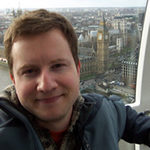When Proteins Go Rogue: Structural Disorder in Neurological Disease
Derek Wilson
Grade Level
Talk Description:
For some time now, we've been able to take really pretty 'snapshots' of proteins - those gigantic biomolecules that not only make up large parts of your body (i.e., hair, nails, parts of your eye), but also *do* almost everything in your body, from muscle contraction to converting food into energy to fighting off infection. As it turns out, a large part of how proteins actually do what they do is attributable to their *shape*, so it's nice to have pictures that tell us what that shape is... But here's the thing: If the proteins were actually as rock solid and bricklike as they appear to be in our 'snapshots', most would have almost *no function at all*. In order to function, proteins not only have to adopt a particular shape, they also have to exhibit a particular set of *motions*. These motions are important to function, but they are also dangerous, so they've had to evolve on a bit of a tightrope: Proteins have to move to do what they do, but they can't move too much o they'll stick together and cause disease! When protein motions go wrong, any number of (very bad) things can happen, but the most common manifestation is Alzheimer's, Parkinson's, ALS or any one of a huge number of illnesses that punch holes in your brain. In this talk, we'll learn about proteins, how we study their structure, how we study their motions and how we ultimately hope to stop them from going rogue.
